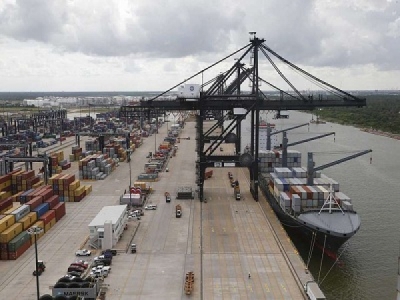
Posted on February 26, 2018
By Dug Begley, Chron
Officials from a half-dozen Texas ports, including Houston and Freeport, on Wednesday outlined their plans for deepening channels, making repairs from Hurricane Harvey and bolstering road and rail improvements planned as ship volumes are expected to rise up and down the state’s Gulf Coast.
Though supportive of the projects, members of the Texas Senate Transportation Committee meeting in Austin struggled to offer specific plans for putting more state funds toward improvements.
“What we have got to do… is try to find a reasonable way to fund this thing,” state Sen. Robert Nichols, R-Jacksonville, said. “We’re looking for opportunities and suggestions.”
The meeting in Austin was the first of several likely to be scheduled on the topic.
Though federal money is typically used for such projects, it is limited and can take years to funnel from Washington, through the U.S. Army Corps of Engineers that oversees waterways, to state and local officials.
Port Freeport, south of Houston, spent more than a decade awaiting clearance to deepen the port to more than 50 feet, and officials expect it to wait years further to receive the federal portion of the $295 million deepening.
A trickle of state funds opened last year, when Gov. Greg Abbott signed SB 28. The bill, by state Sen. Brandon Creighton, R-Conroe, allows port officials to use money from the Texas Mobility Fund that is funded by revenue from vehicle title payments and driver’s license fees. Creighton’s bill set specific limits on how the money could be used only for projects related to entering Texas ports.
Creighton’s bill also created a fund to pay for improvements to ship channels, such as dock expansion and dredging, but it didn’t put state money in it.
Instead, the fund relies on money the Texas Transportation Commission “receives as a gift, grant or donation.”
Port officials argue that while they can privately pay for certain improvements via fees assessed on containers and partnerships with users of the facilities, state money is needed to leverage federal dollars, perhaps accelerating how quickly money comes from Washington.
As President Donald Trump has indicated infrastructure – especially public-private partnerships – will receive special attention, now is the time to plan.
“If the state of Texas and Texas ports do not demonstrate that commitment, other states will,” Port Freeport CEO Phyllis Saathoff said.
The need for money comes at a time Texas ports are seeing increased demand, and far more on the horizon. Roger Guenther, executive director of the Port of Houston, told lawmakers the number of containers moved through the port – the Gulf’s largest – increased 25 percent from 2015 to 2017.
Recently, he said, Houston extended its hours of operation so trucks could come and go from the port outside the typical peak commuting periods.
“Our business is going to continue to grow and we have to move it out of the region more efficiently,” Guenther said.
That means moving it more ways, not just more hours of the day, something port officials have stressed for years. In addition to highway improvements, Guenther said it will be necessary to upgrade rail amenities and even come up with new solutions, such as a proposed freight shuttle.
Despite a six-day shutdown of Texas ports in the wake of Hurricane Harvey last summer, Guenther and others said the demand is not waning. They said efforts need to happen before and not after pounding storms, which can lead to silt buildup in waterways.
“We need to push for resiliency,” Guenther said. “In other words, advanced maintenance for channels.”
As with the channels, officials stressed the need for improvements on land to better move trucks through growing regions.
“We don’t see congestion encountered in many port communities around the region and we want to keep it that way,” Guenther said.
Source: Chron





